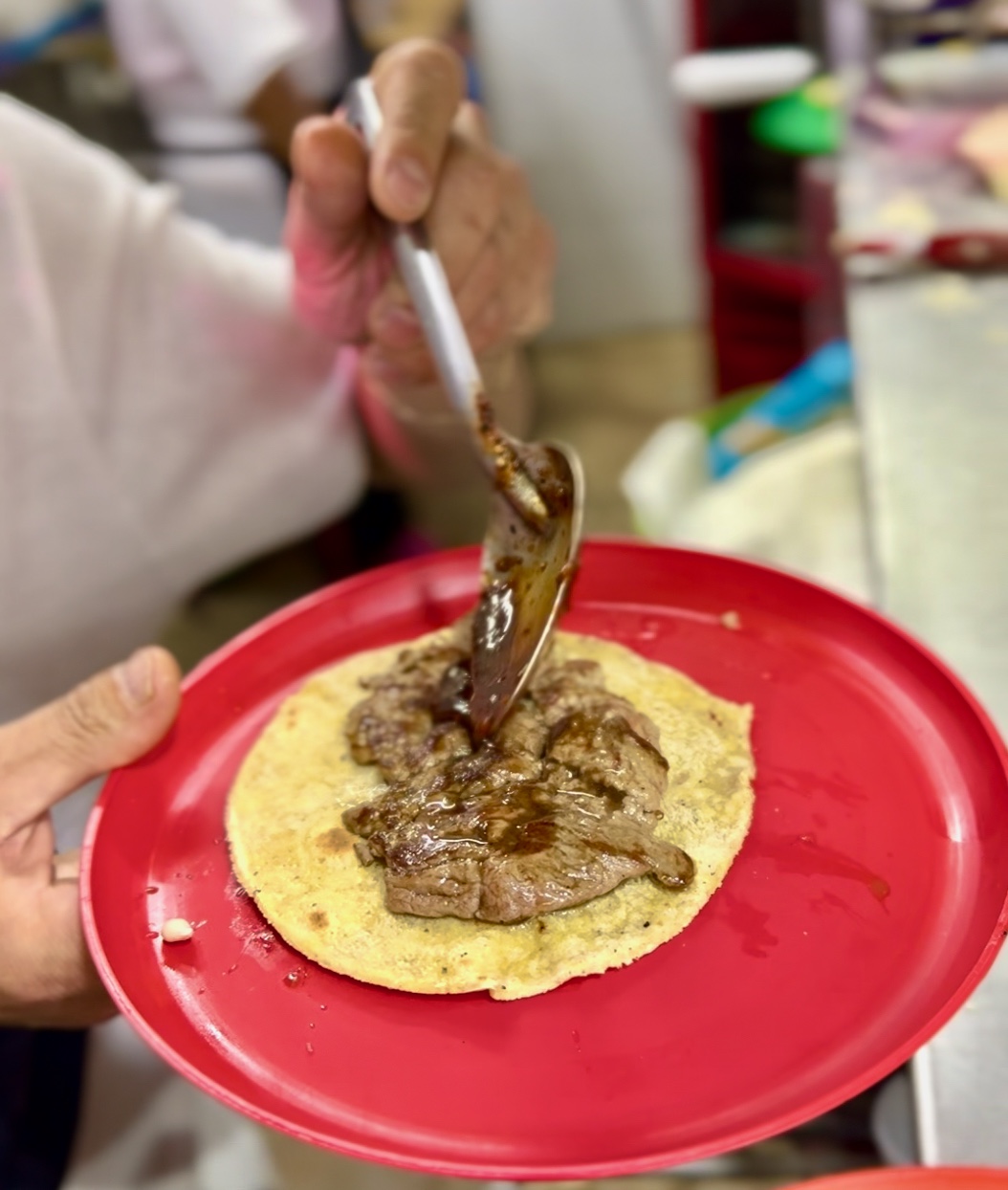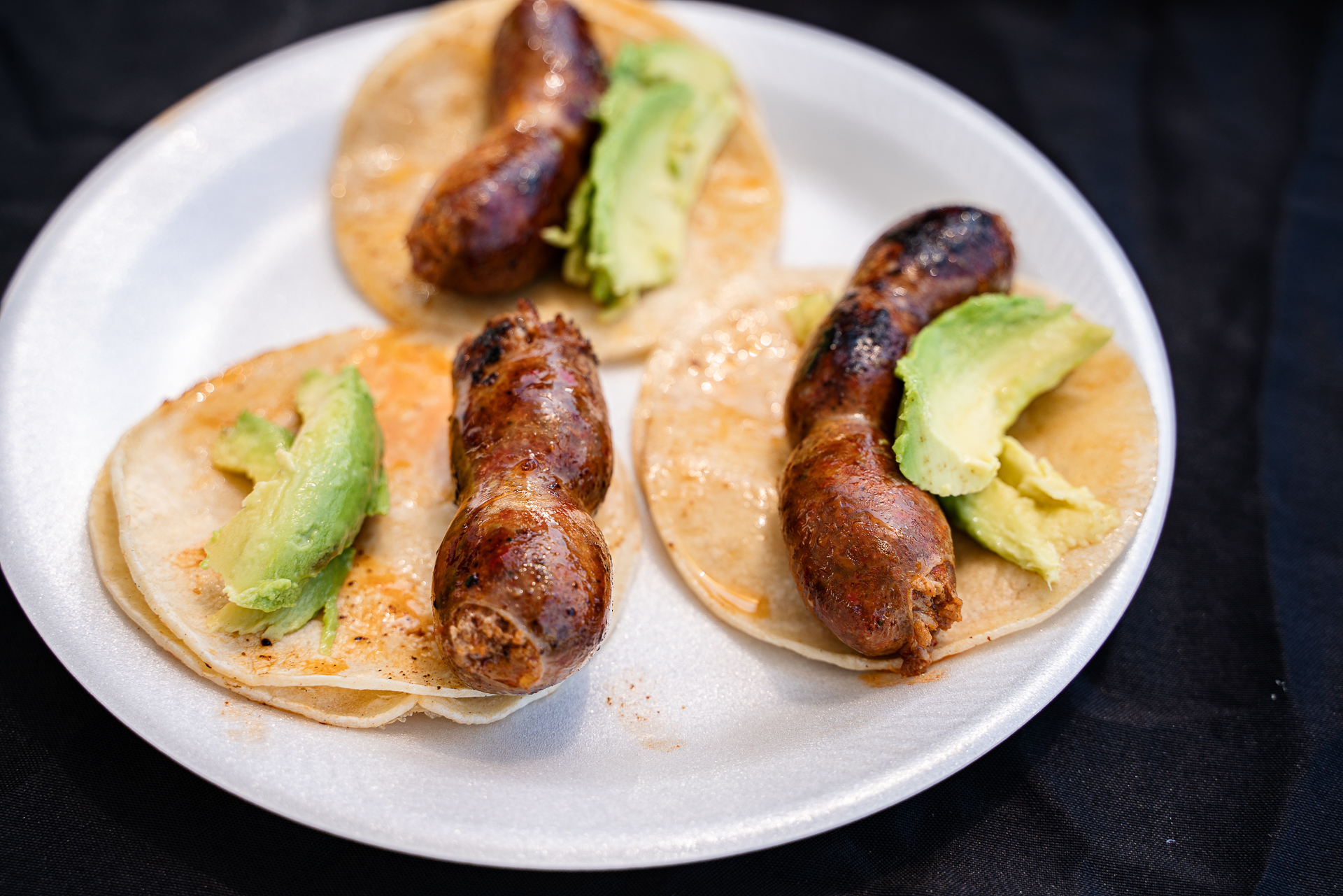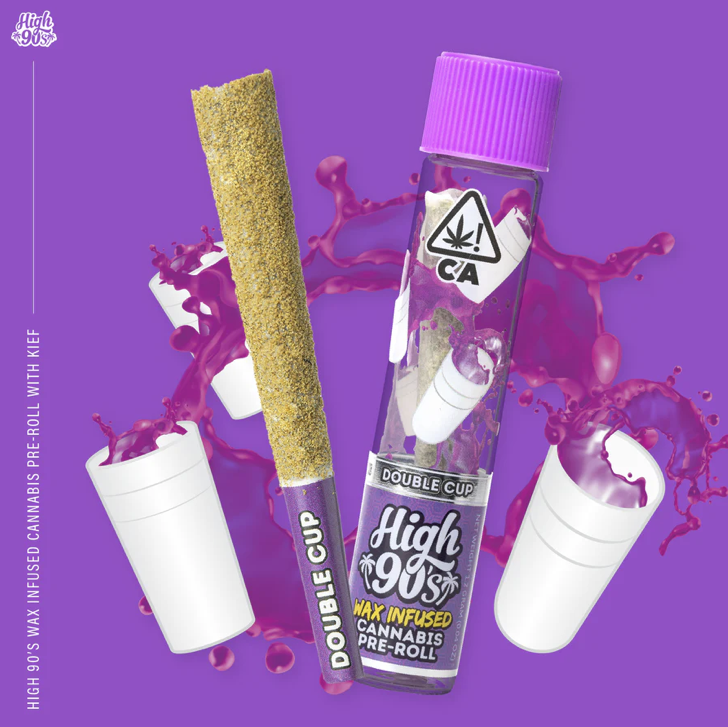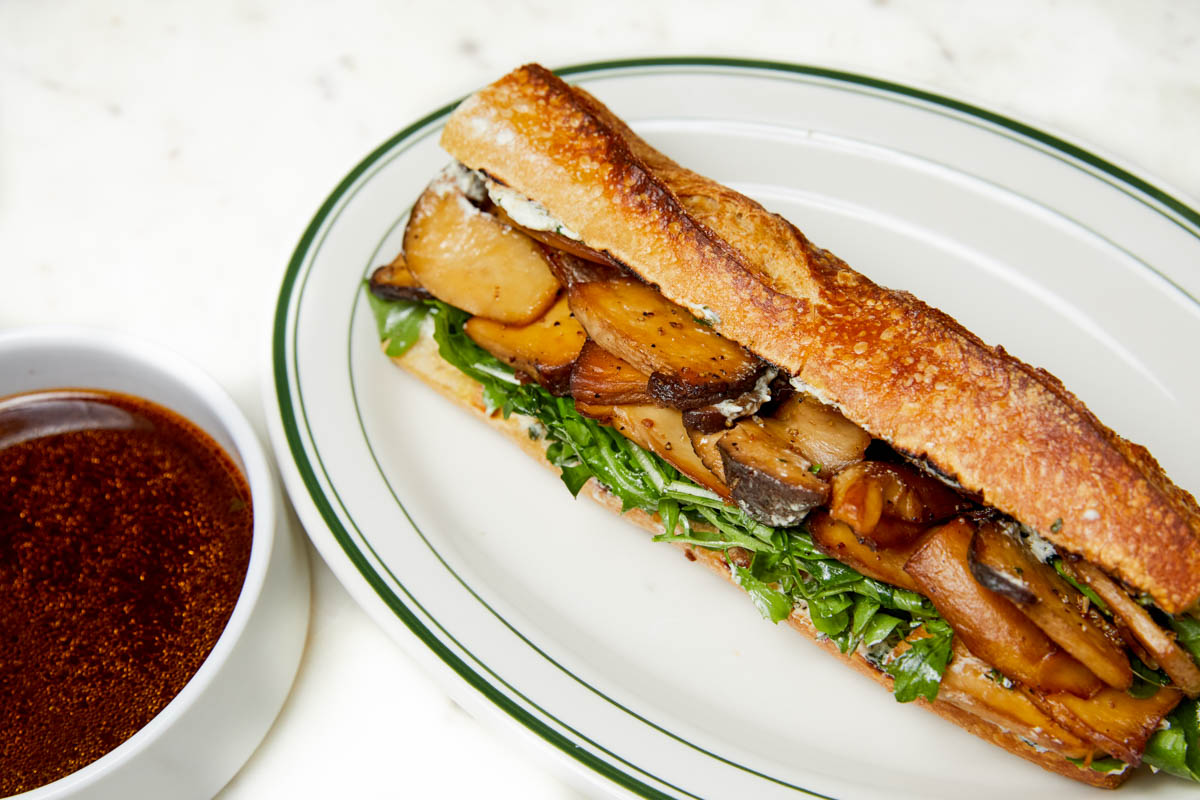[dropcap size=big]A[/dropcap]s we approach Halloween, people taking photos in front of famous horror movie locations often pops up on social media news feeds. Notoriety is almost always given to two movies shot in Los Angeles that take place elsewhere. Both are set in idealized, fictional Midwest towns; thematically, both films are about the violation and loss of innocence.
Halloween (1978) locations were concentrated in Hollywood and South Pasadena, which has often been a go-to spot for filmmakers seeking that Anytown, USA vibe. A Nightmare on Elm Street (1984) shot across the city at locations including the asbestos-ridden, later-condemned basement of Lincoln Heights Jail. Also appearing in Nightmare is Evergreen Cemetery in Boyle Heights, where swaying palm trees rise high above the lead actors’ heads. (So much for an American Midwest neighborhood.) This year, another famous Freddy location is getting more attention than usual, as the home of the film’s heroine Nancy Thompson (Heather Langenkamp) recently went on the market.
There’s another horror picture of the era—one that doesn’t attract busloads of tourists to its L.A. filming locations—that depicts a less virtuous side of teenage life and shreds to pieces any little bit of chastity hidden in its bones. Like Freddy Krueger and Michael Myers before them, the ghouls of Dan O’Bannon’s urban punk-zombie film The Return of the Living Dead also walked the streets of L.A., but its storyline suggests an aesthetic more grunge, less tranquil. And though it doesn’t take place in the Midwest, you could call it Midwest-adjacent.
It’s not specified until late in the film that the events of The Return of the Living Dead take place in Louisville, Kentucky.
The film’s production designer, William Stout, laughs when L.A. TACO asks why the film was set in Louisville, of all places. The internationally celebrated comic book illustrator and conceptual artist whose creature and concept designs have been realized in dozens of films, including Predator (1987), Men in Black (1997), and Pan’s Labyrinth (2006), said he doesn’t know why The Return of the Living Dead was set in the south.
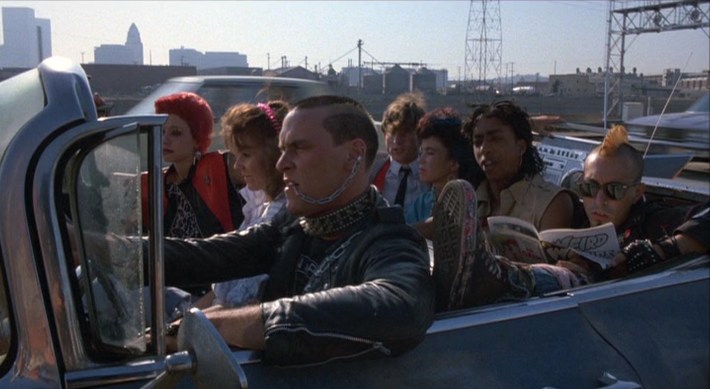
O’Bannon, the film’s late writer-director arguably most well known for penning Alien (1979), says on the DVD commentary that he set the film in Louisville because it was “offbeat” and that no one would place this type of film in Louisville.
Stout tells L.A. TACO that the setting has come up in conversations with fans.
“I go to Louisville every year because one of my favorite conventions is there, and they always have me as a guest; it’s called WonderFest,” says Stout. “We’ve done a whole series of presentations on The Return of the Living Dead, and invariably after the presentation, people will come up to me—from Louisville—and say, ‘I know just where you shot that.’ I guess it’s a credit to my design that it tricked them into thinking that it was shot in Louisville, but none of it was shot in Louisville” except for a brief insert of stock footage.
The Return of the Living Dead is minimal in its use of locations. While nothing in the film necessarily screams L.A., Angelenos will surely recognize the east embankment of the L.A. River. A location where the film’s young characters walk in front of a graffiti-scrawled wall “was chosen to represent youth and what was going on in the punk scene at the time,” says Stout. “I don’t know if that really reached Louisville. I’m sure in some way it did, in some small pockets, but I doubt if there were any punk clubs in Louisville the way they were in L.A.,” says Stout.
While there was a punk scene in Louisville, it was almost entirely underground, as is suggested in a study from the University of Louisville.
“To me, it was important to make [the design] not so specific to Louisville, and certainly not specific to L.A., but more of a generic fantasy of a spooky Southern cemetery, says Stout.
The Return of the Living Dead events take place at the start of July 4th weekend, 1984, mainly around the Uneeda Medical Supply building—the self-proclaimed largest medical supplier in the country—and the nearby Resurrection Cemetery at the end of the block. Years after a handful of cylindrical vats intended for the U.S. Army are accidentally shipped to Uneeda, the classified chemical toxin contained within is accidentally unleashed into the atmosphere, reanimating hundreds of brain-eating corpses in the cemetery when it begins to rain down.
Stout recalls that it wasn’t a terribly long or difficult search for the location, but a cul-de-sac in Lincoln Heights presented the ideal geography. At the end of Moulton Avenue, just off the Main Street exit of the 5 freeway, the production found an empty lot surrounded by train tracks where Stout’s team constructed the cemetery’s concrete archway out of foam.
“In an early cut of the film, you could see a train passing through the graveyard because the tracks were just on the other side of our fake cemetery gates,” says Stout, laughing at the memory.
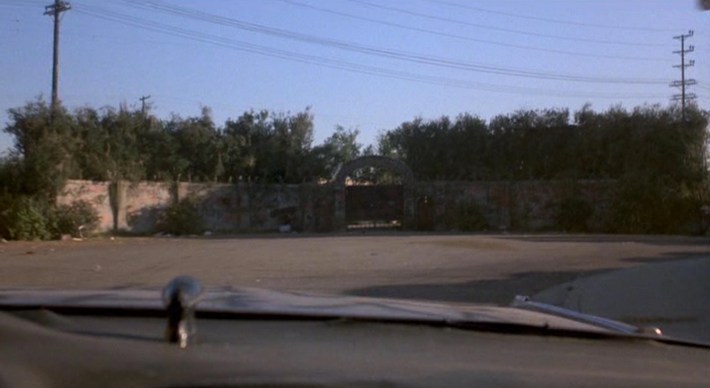
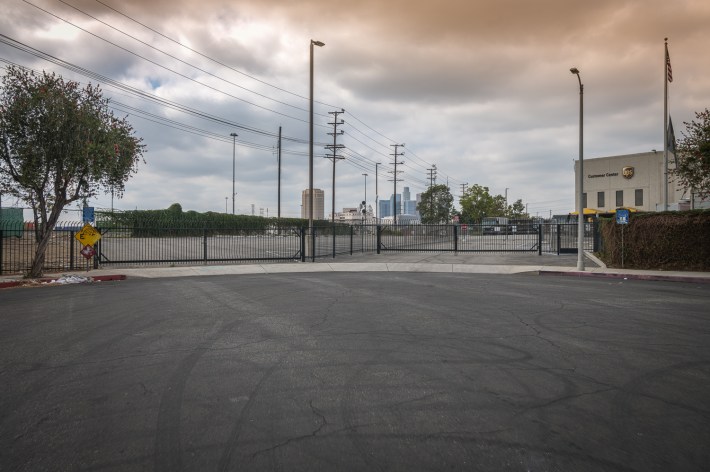
Next to the lot was a single concrete building that Stout describes as “monolithic.”
Upon first glance at Uneeda Medical Supply, one of the characters says of the building, “Man, what a hideous, ugly place.” Another character responds, “I like it; it’s a statement.”
Stout says, “I wanted it to look ominous and oppressive.” He recalls that the building was an art studio loft at the time of principal photography. “That was right in the middle of the big movement of the L.A. artists to takeover unwanted buildings in downtown—mostly warehouses—and turn them into art studios, and then that, of course, gentrified the entire neighborhood and pretty soon the artists couldn’t afford to live there anymore,” says Stout.
In 1982, the former Pabst Blue Ribbon brewery, which suspended operations at the location in 1979, began transforming into what is today the artist-in-residence Brewery Artist Complex where the biannual Brewery Artwalk takes place. While the building at 698 Moulton Avenue—built-in 1922 as an Edison electric substation to reduce and distribute voltage over power lines—adjoins the Brewery Artist Complex, a map on the property’s website doesn’t show the substation as part of the campus.
In the ‘90s, the building was converted into a living workspace and became known as the Carlson-Reges Residence, named for the couple that commissioned the overhaul. In subsequent years it was used as a show-dog kennel, an arts-event space, and gallery, according to the L.A. Times. It’s a renovation akin to the Deetz’s contemporary makeover of the Maitland’s bucolic family home in Beetlejuice. Metal beams protrude from windows while corrugated steel panels and rust-colored siding adorn the exterior walls.
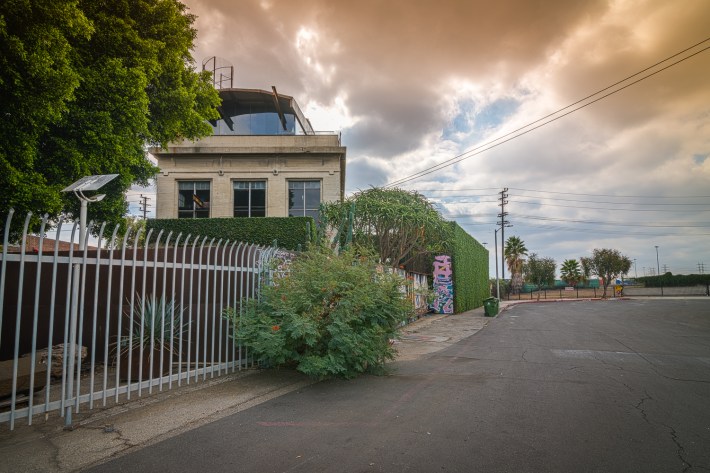
The Uneeda interior was built in a warehouse in Burbank, where the production also had its offices. Stout took Polaroid photos of the building on Moulton Avenue for reference to create the interior set, which included plywood walls made to look like poured concrete. The cemetery interior was built in an olive grove in Sylmar, where elements like Spanish moss, a Civil War cannon, and a zombie Confederate soldier add to the aesthetic of a Southern cemetery. Trees from the olive grove were cleared to make space and transported to Moulton Avenue, situated behind the fabricated cemetery wall.
Today, a rusty metal barrier clad in graffiti and various bits of landscaping slightly obscure the view of the Uneeda building from the street. Over the last few years, the contemporary industrial home has appeared on the market a few times, only removed shortly after. It was last listed in August 2021 for $7.3 million. So, keep your eye out… If you have the cash lying around, you could be the next lucky owner of Uneeda Medical Supply from The Return of the Living Dead.
Follow Jared on Twitter at @JaredCowan1.

